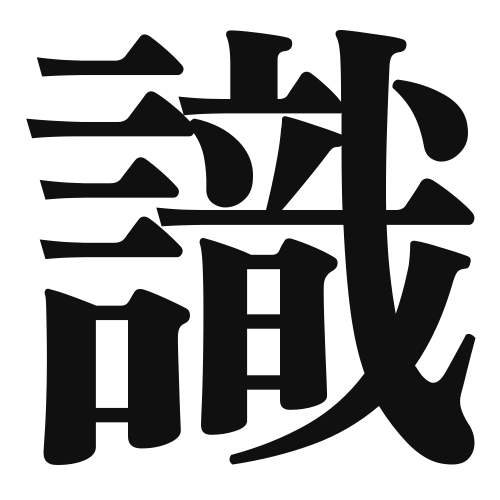1. Overview of Meaning
The kanji “識” (shiki) primarily means “to know,” “to recognize,” or “to understand.” It conveys the idea of awareness and comprehension, often in relation to knowledge or perception.
2. Formation and Radical
Formation of the Kanji: The kanji “識” is a compound character (会意文字) that combines elements to convey its meaning. It consists of the radical “言” (gen), which relates to speech or words, and “識” (shiki), which adds the notion of knowledge or understanding.
Radical: The radical of “識” is “言” (gen), indicating its connection to language and communication.
3. Examples of Usage
Common Words and Phrases: Some frequently used words that include “識” are:
- 識別 (shikibetsu) – identification
- 知識 (chishiki) – knowledge
- 認識 (ninshiki) – recognition
Example Sentences in Daily Conversation:
- 彼はその問題を識別するのが得意です。 (Kare wa sono mondai o shikibetsu suru no ga tokui desu.) – He is good at identifying that problem.
- 私たちは新しい知識を得ることが大切です。 (Watashitachi wa atarashii chishiki o eru koto ga taisetsu desu.) – It is important for us to gain new knowledge.
4. Synonyms and Antonyms
Similar Kanji: A kanji with a similar meaning is “知” (chi), which also means “to know.” However, “知” often emphasizes the act of knowing or being aware, while “識” leans more towards recognition and understanding.
Opposite Kanji: An antonym for “識” is “無識” (mushiki), which means “ignorance” or “lack of knowledge.”
5. Cultural and Historical Background
Relation to Japanese Culture: The concept of “識” is deeply embedded in Japanese culture, where knowledge and understanding are highly valued. It is often associated with education and wisdom.
Proverbs and Idioms: One common saying is “識者は語る” (shikisha wa kataru), which means “the knowledgeable speak,” emphasizing the importance of sharing knowledge and understanding in society.
